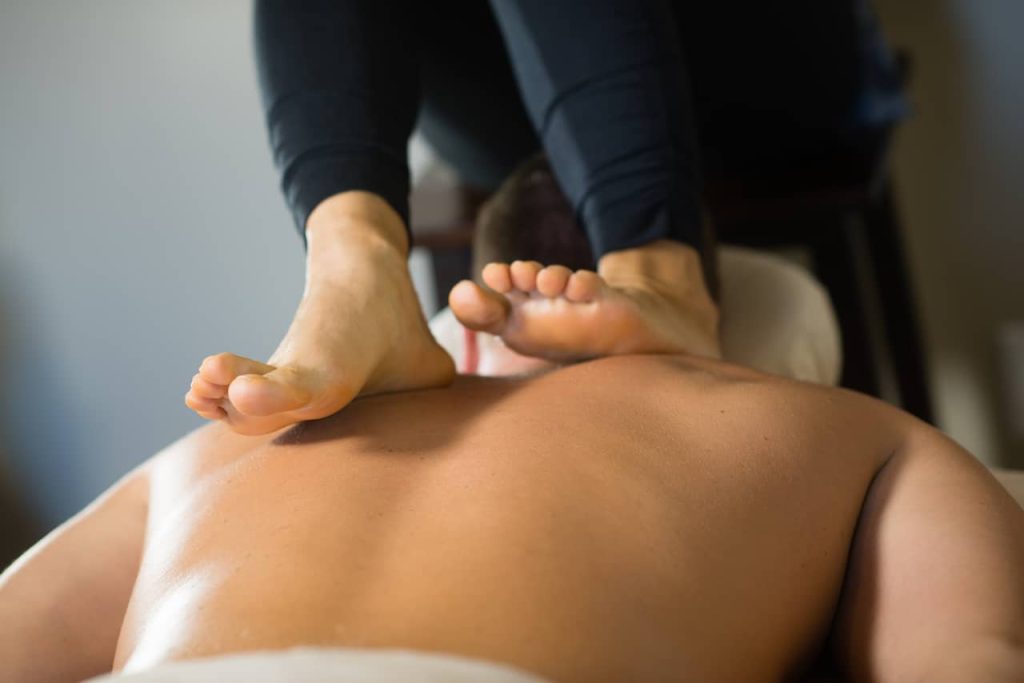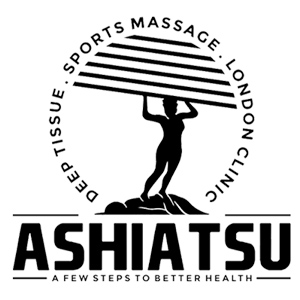Foot massage has been used in different cultures for hundreds of years. When done regularly, it calms the body and makes it healthier. Most types of foot massage today use techniques from other areas of study, such as shiatsu and reflexology. By applying pressure to some of the more than 7,000 nerve endings in the foot, practitioners of these therapies believe they can release energy blockages accumulating in other body parts. Reflexology and foot massage can help relieve stress and pain and even speed up the healing process after an injury.
What is an Ashiatsu massage?
Ashiatsu is a foot-on-body massage technique from Japan. The Ashiatsu Massage London therapist applies pressure on the body, not with their hands but with their feet. The patient will be instructed to lie on a massage table face down. The therapist will use a variety of apparatuses, such as ropes, bars, chairs, or benches, to elevate themselves above the patient. The therapist will use their feet to rub the patient’s entire body. Due to the effects of gravity and pressure, the therapist may utilize lengthy, deep strokes on the body. A variety of oils, creams, and lotions are applied to the body before the start of an Ashiatsu massage to help relax the muscles and enhance the experience.
In any “FasciAshi” class, the following is how “Myofascial Ashiatsu Barefoot Massage” is explained:
In this type of therapy, a Licensed Therapeutic Therapist uses their feet to carefully glide down the skin as they work on muscles and the layers of fascia around them all over the body. This method of barefoot massage is more up-to-date. Additional specialized training tracks allow the practitioner to specialize in various fields by giving theories and protocols that combine a myofascial massage approach with elements of deep relaxation, sports massage, or even a more clinical approach for pain management and injury rehabilitation.

In addition to their feet, barefoot massage therapists who take classes at the Center for Barefoot Massage will need to hold on to overhead bars and lean back into a hanging strap to use the different weighted pressure angles we teach in our series of classes. Depending on the need, the environment’s safety, the relative weights of the client and the therapist, and the level of the therapist’s FasciAshi training, the amount of the therapist’s body weight used in this technique can range from very little to very much.
We teach Fijian barefoot massage and matwork, which is described as follows:
When barefoot massage first became popular in the United States, it wasn’t taught with Neuromuscular, Trigger Point, or Sports Massage in mind. On the other hand, these theories are added to the method to help us understand each stroke. The word “barefoot massage” comes from the country where it was first used. It is a faster-paced style of bodywork in which the person being worked on wears loose clothes and lies on a floor cushion or Thai/Shiatsu mat in different positions with support.
The same suspended strap used in our FasciAshi technique is also used in this one. This gives the working barefoot massage therapist more confidence in their balance and leverage, and the technique can be done while sitting, sitting on the floor, or standing. Fijian massage is a strong technique that doesn’t use the therapist’s whole body weight. There are no overhead bars, lubricants, or “back walking” in Fijian massage.
What an ashiatsu massage can do for you?
Ashiatsu is a Japanese style of deep tissue massage that stretches muscles by applying pressure. The therapist’s foot is wider than their hand, so they may make broader strokes while working on the muscles without making the patient feel awkward. Stress and pain, which can create muscle spasms, can be alleviated with a deep tissue massage, improving circulation.
The lumbar nerves are another part of the body that an Ashiatsu massage can help. When foot pressure opens up and lengthens the spine, the nerves along the lumbar area may have more room. Lastly, Ashiatsu massage helps relax muscles, so the client’s body can move more freely and stand up straighter.

Enhances overall adaptability by:
The therapist’s body weight, combined with the effects of gravity, helps to stretch and lengthen the muscle fibers as they apply slow, deliberate strokes. Especially beneficial for athletes, therapy works to restore the body’s normal range of motion by relaxing tight muscles.
The iliotibial band, which spans the outer thigh and knee, is a thick band of tissue that benefits well from ashiatsu massage. Pain in this leg area is common in long-distance runners because it is vital to the sport. Furthermore, scar tissue and adhesions associated with long-ago traumas respond well to this therapy.
There is less discomfort than with deep tissue massage:
Regular deep tissue massages involve finger, thumb, and elbow pressure to reach deeper layers of muscle tissue. They can be quite painful, sometimes even leaving bruises, due to their small size and sharp edges.
The pressure in an Ashiatsu massage session can be increased by three without causing discomfort. Ashiatsu is gentler than Western massage techniques, yet it also penetrates more deeply.
You won’t have to endure any further discomfort until you obtain the relief you need, making the whole process less taxing and more enjoyable. If you want to learn more about Ashiatsu massage in London, you can do so by visiting the website.


